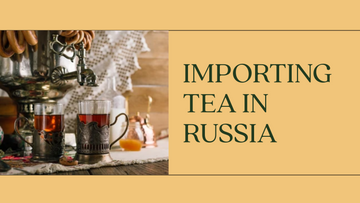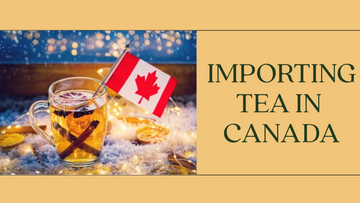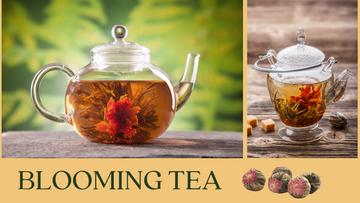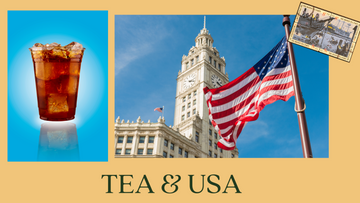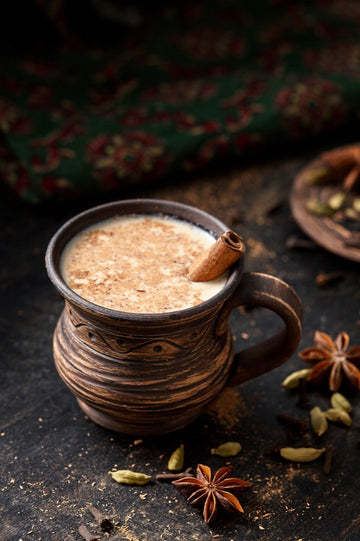
Although it originated in China, Tea or ‘Chai’ has a ubiquitous presence in the lives of Indians. It isn’t just a beverage but a feeling and a culture that is deeply rooted.
Are you traveling? Your journey is incomplete without chai.
Do you want to kick-start your day? Get a cup of chai.
Want to stay awake for work? Drink some chai.
It’s foggy and cold. Get some chai.
It’s piping hot, yet chai.
It’s rainy outside; let’s have some chai.
CHAI. CHAI. CHAI. Indians love chai irrespective of the weather, occasion and location.
In this article, we look at how the Indians drink tea differently across the states and how the Indian tea culture is different from the rest of the world.
But, before that, it is important to know a bit of the history of tea because chai seems to be an Indian thing. But, it is not.
A brief history of tea in India
As per the ancient scripts of Ramayana, Lakshamana, the brother of Lord Rama, got injured in a battle with Ravana. Lord Hanuman was asked to bring the ‘Sanjeevani Booti’ from the Himalayas, which healed his wounds. That ‘Sanjeevani Booti’ is said to be a herbal tea, according to Sanskrit scholars.
Tribals in some parts of India too enjoyed hot cups of tea by brewing the tea leaves in hot water. Later, these leaves were tested and identified to belong to a popular Chinese tea plant.
Consumption of tea in various parts of India
In India, Britishers introduced tea and started with its production to compete with the Chinese monopoly. It was in the 1850s when a stolen plant from China was planted in Darjeeling.
However, tea has existed in India long before that, mainly in the form of herbal teas and ‘kadhas’. But the plantation of the tea plant in Darjeeling led to a production of a different variety of tea because of different climates and magnitude.
With this began the expansion of the tea plants to Assam and other parts of India, making India a leading exporter of tea and spreading the tea culture across the globe.
It is believed that milk was added to chai for the first time by travelers and traders from Gujarat, Maharashtra, and Bengal, as they had easy access to good quality milk. Some believe that North Indians added milk to tea, while South Indians added the spices.
In the Northern parts of India, you will find people selling tea in earthen pots or ‘khullad’, which makes it taste extra special.
The traditional tea turned into sweet milky tea soon and became the go-to beverage for workers and households to be accompanied with snacks, soon after cross-country trade increased.
Tea is indeed popular for its cultural origins, but even bigger merit comes with its pricing. As it is produced locally, it is affordable, and the poor strata can consume it too. Tea is loved by people of every class.
In Delhi, people love having masala chai or ones with fresh cream or ‘malai’. In Mumbai, people prefer ‘cutting chai’ or half a cup of tea.
In Hyderabad, Irani chai is popular. Darjeeling is now famous for its fragrant chai, Gujarat for its masala chai, and Kashmir for its delicate pink chai.
Tea consumption across the globe
Let us have a look at the cultures of consumption of tea in different countries and how they differ from the Indian tea culture.
India
Although Indians acquired the habit of drinking tea from Britishers, they enhanced its flavours to create a distinct taste and smell. In India, a variety of ingredients, including ginger, cardamom, pepper, and cloves, are added to the boiling water and dried tea leaves that are referred to as ‘Chai Patti’.
Today, India is a leading producer and exporter of tea. In every corner of the country, you will find a tea stall with many workers & students around them. Indians love to dip their biscuits, bread, and parathas to enjoy tea. Most Indians start their day with a cup of chai, and, for them, it is common to consume tea 3-5 times a day. Moreover, some people believe that drinking tea alongside or after a meal can help digest food well.
China
As it originated in China, tea is still a commonly consumed beverage. Due to the country’s diverse climates, China is home to a huge variety of teas. Oolong, Huangshan Maofeng, Jasmine, and gunpowder are four of the most popular varieties of tea in China. As per Chinese philosophies, tea helps bring balance, harmony, and fulfillment to one’s life.
Japan
The Japanese cultivate matcha tea, which has become famous worldwide. The tea is made up of dried leaves that turn into powdery forms. Matcha tea is known for its immense health and skin benefits.
Britain
Britain was the one to introduce tea to India. Since then, it has undergone various transformations, even in Britain. There are various fancy tea shops serving royalty and elites and even for average workers. As per some facts, over 160 million cups of tea are consumed in the UK each day!
Morocco
Tea has been a part of Morocco's culture for years. It is usually served as a welcome drink, as a part of hospitality. Irrespective of your duration of stay in Morocco, you will be welcomed with a cup of tea. It is well-known for its hot mint tea, a tea made by boiling fresh mint leaves in hot water.
In Morocco, tea is served in three phases, with a unique taste each time. In the first batch, it is light, known to reflect the gentleness of life. The second batch is a bit stronger, which reflects strong love. The last batch is bitter, reflecting the bitterness of death.
Turkey
When it comes to consuming tea, Turkey is in the #1 position, and the difference in consumption of tea in Turkey from that of other countries is huge. In Turkey, people drink around 3.16 kg of tea every year! Even though it was only introduced in the 20th century, tea consumption shot up because the cost of imported coffee began to rise, and tea seemed to be the next best alternative. People of Turkey serve tea in exquisite glass cups to let the original color shine through.
Thailand
Thailand is popular for its ice tea made by pouring brewed tea over ice and served chilled. It is commonly served with snacks or meals and is spiced up with cinnamon, orange blossom, and anise star, especially on hotter days.
Russia
Known to have a strong and intense flavor, ‘Zavarka’, the tea of Russia was embraced years later than other countries. However, it is a unique variety of tea that is made by boiling the tea until it gets concentrated. In Russian culture, drinking undiluted tea is next to impossible. They use an ornate metal container that holds the boiling water that helps with dictating the intensity of the tea (by the person who’s making it).
Initially consumed for its medicinal properties, tea is consumed for multiple purposes across the globe today. It is a source of relaxation for some, a means of pleasure for some, and a traditional or spiritual matter for others. It is exciting to note how tea lovers across the globe are united by ‘tea’ no matter how distinct their tea and the reason for its consumption.

